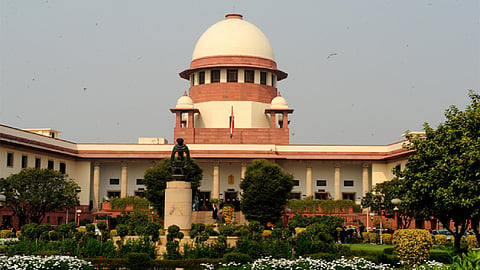

CHENNAI: For the past few weeks, those following politics and judiciary witnessed a war of words between the Union government and the Supreme Court over a range of issues, all of which seemingly have the same root: the appointment of judges to the higher judiciary.
With neither side willing to concede ground, the matters appear to be quickly coming to a head.
There has been a palpable change of equation between these two pillars of democracy in the recent past, which many have traced to the elevation of DY Chandrachud as the Chief Justice of India.
This transformation has been much more pronounced because the Centre appeared to have had an upper hand since the BJP-led NDA came to power in 2014.
At the heart of the tension is the appointment of judges, specifically the manner in which they are chosen.
While the Supreme Court has held steadfast to its primacy over the matter through the Collegium system, the Centre is clearly not happy with it, especially after the apex court struck down its effort to have a say in the matter through the National Judicial Appointments Commission (NJAC).
The belligerents whom the government fielded are Union Law Minister Kiren Rijiju and Vice President Jagdeep Dhankar.
The former was direct and trenchant in his criticism of the Collegium system, terming it to be against the Constitution. He even stated that if the Supreme Court Collegium was unhappy that the government was sitting on the files (of nominees it recommended), then “you appoint yourself, you run the show”. Seldom have we seen such a blunt attack on the higher judiciary by a senior representative of the government. Vice President Dhankar was not as brusque but left little unsaid when he commented that the Supreme Court striking down the NJAC Act undid the “power of the people”.
“The world does not know of any such instance,” he added while delivering a memorial lecture, which had the senior-most members of the higher judiciary in attendance.
The court responded in a measured – but firm – manner, reminding the government that the law of the land has to be followed regardless of its disappointment with the NJAC fiasco.
The Centre is not backing away, as it returned the files of 20 nominees within hours of the Supreme Court taking up the issue with Attorney General R Venkataramani and Solicitor General Tushar Mehta.
There are deficiencies in the Collegium system, key among is the lack of transparency. The powers that the apex court wields reduces criticism to soft punches that it can brush off easily.
But it is not as easy when the government, especially one as powerful as the incumbent regime, pokes holes in the process. It exposes weak spots and opens the Collegium system to unwarranted criticism, to deal with which the backers of the Collegium need to address the lacunae immediately.
Even critics are not fully in favour of the government having power over appointment of judges. It is bad in theory, as the government is either the litigant or respondent in a majority of cases; and it’s worse in practice because a ‘committed judiciary’ can have a disastrous effect on democracy.
Amid this hoopla, came an incisive speech by President Droupadi Murmu.
With CJI Chandrachud and Law Minister Rijiju present on the dais, Murmu put the focus where it should be firmly: the people, especially the oppressed who look up to the courts to deliver justice.
With the benefit of lived experience that enabled her to have a better understanding of administration of justice and how crucial it is for the marginalised, she urged the judiciary, executive and legislature to come together for the sake of those who need the support of courts the most.
For the oppressed masses, speedy delivery of justice is not a matter of power or ego struggle; it is about survival. On this, the Centre and Supreme Court should be on the same page.
Visit news.dtnext.in to explore our interactive epaper!
Download the DT Next app for more exciting features!
Click here for iOS
Click here for Android